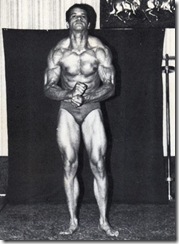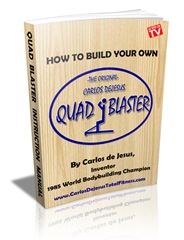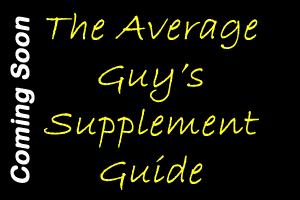Several years ago I had lower back surgery to repair a ruptured disc. As a result of that surgery, I’ve been continually concerned with potential injuries to my back. At the same time, I want to make my quads grow larger. Everyone told me to squat and squat heavy in order to gain quad size.
I gave the squat idea a try, but every time I got to a higher weight where I could really work my quads, I’d get a muscle spasm. I’ve come to decide that those injuries were caused by my fear of getting hurt. As Skip Lacour would say, I let my head take over when my body should have. Whatever the cause, I was very hesitant to do squats as a result of all the problems I’d experienced. I thought all hope was lost until…enter the Quad Blaster.
The Quad Blaster is a very simple, but effective device for growing your quads. It can completely replace the squat in your workout routine or just supplement it. Alwyn Cosgrove has called the Quad Blaster an iso-compound exercise because it works like a compound movement and an isolation movement at the same time.
This device was invented and patented by Carlos DeJesus, a world champion natural bodybuilder. Carlos used this device to grow massive thighs during his competition years.
Carlos had suffered from lower back pain and was trying to find ways he could squat without pain. Eventually he was diagnosed with a degenerative disc disease which meant no more barbell squats for him. He was a competitive bodybuilder and knew he was going to need something good to make his quads grow.
As a result of his own personal issues, Carlos invented the Quad Blaster in 1974. By 1979 he had the plans copyrighted and in 2000 he had the device patented.
Through the use of the Quad Blaster, Carlos was able to win the 1981 Natural Mr. USA, the 1981 Natural Mr. North America and the 1985 Professional Natural Mr. World.
When I first tried the Quad Blaster I was pretty amazed at how well it worked my legs with just my own body weight. You get into the machi ne with your feet close together. It mimics a narrow stance squat, which is an extremely quad-dominant exercise. Your body travels in a very vertical stance. You are able to add weight as necessary to increase the intensity of the exercise. You can either hold a dumbbell in the front or a barbell in the back to make this an extremely intense exercise. If you stick to proper form a 50 lb. dumbbell will be extremely difficult for you to complete.
ne with your feet close together. It mimics a narrow stance squat, which is an extremely quad-dominant exercise. Your body travels in a very vertical stance. You are able to add weight as necessary to increase the intensity of the exercise. You can either hold a dumbbell in the front or a barbell in the back to make this an extremely intense exercise. If you stick to proper form a 50 lb. dumbbell will be extremely difficult for you to complete.
I started using the Quad Blaster and after 24 weeks I had increased my quads on both sides by more than 2 inches. The definition I got was incredible as well. I now use the Quad Blaster in all of my leg workouts. It works as advertised. To quote the sales page, the Quad Blaster is:
- Intense. This is the most intense workout for the thighs. Don’t be decieved by the simplicity of this machine. Once you’ve tried it, nothing else compares.
- Safe. You don't need to put heavy-duty weights on your back. Because of the beauty of design, The Quad Blaster generates immense difficulty through leverage so that holding a 10-pound dumbbell translates to 200 pounds to your thighs. This will save your back and knees. It's so well designed that even put through the worst of trails by a World Champion; even he couldn't damage or break it, even with years of use.
- Portable/Light Weight. Because the total weight is about 15 pounds The Quad Blaster is easily portable and perfect for travel. The side handle makes it easy to pick up and go. Most will especially appreciate this feature. Not exactly what you can do with a bulky machine!
- Compact. The Quad Blaster is compact enough that it fits in the back seat of your car, in the trunk, or under your bed.
- Affordable. Priced so that everyone can afford one. There are three ways you can get one. Pick the one that is right for you so you can jump-start your leg training by having your very own Quad Blaster.
If you want some serious quad growth, get yourself a Quad Blaster. You will not be sorry that you did.
You can buy one full assembled, buy a kit that you assemble yourself or you can buy the plans to do the entire thing on your own.



 fitness industry is a multi-billion dollar industry. There is alot of money to be made by someone with a large list of prospects. A common teaching of internet gurus is to get involved with a joint venture (JV) to assist with building your list of prospects.
fitness industry is a multi-billion dollar industry. There is alot of money to be made by someone with a large list of prospects. A common teaching of internet gurus is to get involved with a joint venture (JV) to assist with building your list of prospects. 
